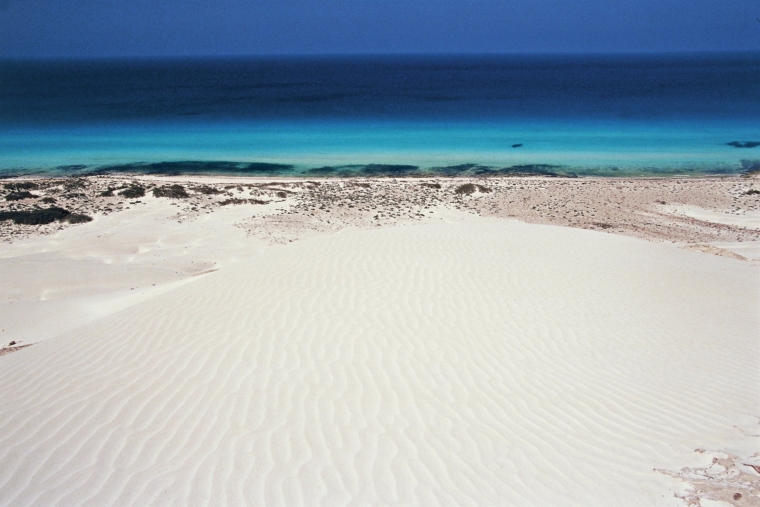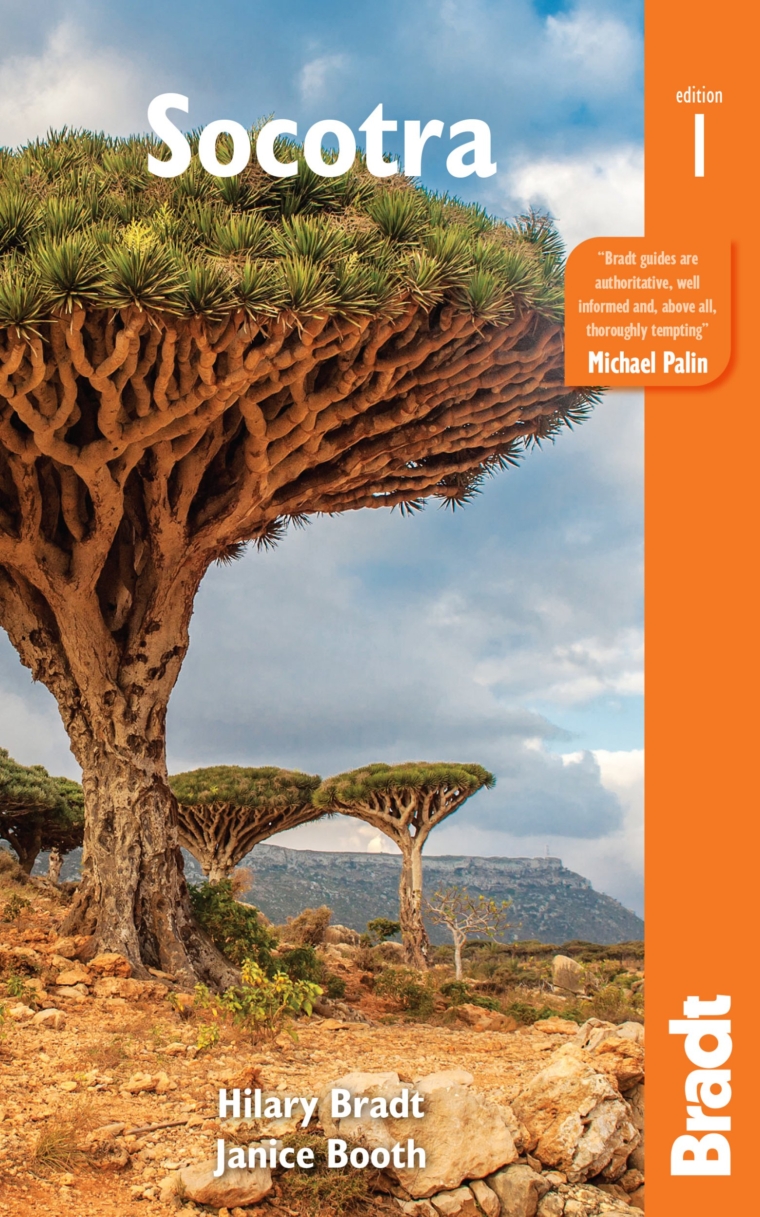“Proposed new title: Socotra. Island off Yemen. Unesco World Heritage Site. Hilary is going in February. She’d like to write a booklet about it – full colour, 48 pages, how to arrange and what to see. Thinks people would buy it.”
So said the agenda for Bradt’s June 2019 publishing meeting, and for a visit of only a week, that seemed fair enough when I could find so little about Socotra.
It was a dream destination, the place I really needed to see before I got too old (ie this year), an almost mythical island that had lodged in my imagination since the 60s, when an explorer gave a talk about it at the Globetrotters Club.
Photos of Socotra seemed implausible: stumpy trees like mini baobabs, giant sand dunes resting against a cliff face, white deserted beaches, and craggy mountains that surely couldn’t exist on an island only 82 miles long.

My friend Janice Booth took an unusual interest in my plans and, to my surprise, announced she was joining my small group – never mind that she was 81 and definitely too old to camp on a remote island; she said a Canadian tour operator recently took a client of 82 who had coped. And Janice loves research. I optimistically told the editorial team that the book might stretch to 80 pages.
So off we went and… wow! Socotra surpassed expectations. We fell in love with the bottle trees with their plump bodies and golden bark; impossible not to anthropomorphise, even without their giveaway scientific name of Adenium obesum. We admired the elegant Egyptian vultures which hung about the campsites hoping for scraps, searched for the endemic birds and reptiles, and some of us clambered 400m up the silver-white dunes. I had expected the dragon’s blood trees like giant mushrooms, but not salmon-pink rocks, inland pools of fresh water deep enough to swim in, and a sea so blue that its colour bounced back off the breasts of any low-flying gulls.
Fragile idyll
Of course there were negatives. The rubbish, particularly plastic, is appalling. It accumulates on beaches (we did periodic clean-ups) and fills the streets of Hadiboh, the capital, which needs no further aids to ugliness – and has only one halfway decent hotel, so camping (with no facilities) is the norm. And the unstable political situation – which we are far more aware of now we are home – was evident from the number of UAE flags painted on rocks or hoisted over settlements, and from the cheery message on our phones “Welcome to Saudi Arabia” when we passed some military posts. Yes, Socotra is part of Yemen, but its strategic position on the shipping route between Arabia and India makes it a desirable acquisition for ambitious neighbouring powers.

We returned home and started writing, secretly knowing that we would quickly exceed our proposed 80 pages. Not only was Janice deeply into shipwrecks and legends and historical happenings, but we had made contact with a growing number of experts on every imaginable aspect of Socotra: its endemic plants, birds, reptiles, history, culture, poetry… everything. Our own lack of knowledge was immaterial; here were people eager to fill the gaps, and to share their passion for this remote but fascinating island.
Then it happened: lockdown. Socotra’s last tourists were flown home a day early, worldwide tourism ceased, as did Bradt’s sales. Survival for the company became the financial priority now, and Socotra was hardly likely to be a bestseller.
But postponement seemed equally unacceptable, and not for entirely selfish reasons. With Yemen preoccupied by its endless mainland war, those ambitious neighbouring powers were closing in. Socotra, our “paradise found”, risked becoming a “paradise lost”.
A non-violent coup in June changed the balance of power, and regulations supposedly protecting the island’s unique natural and cultural heritage were increasingly ignored. Unauthorised construction damaged vulnerable sites and rare plants were looted. We knew that our guide book could help, by raising Socotra’s profile and putting it more in the public eye.
Campaign trail
So – a first for Bradt – we turned to crowdfunding. Janice and I knew that Socotra was special enough to capture attention, so perhaps we could raise enough for a decently long and photo-rich book. Our choice (among various possibilities) of Crowdfunding UK proved to be a good one. Its efficiency and standards were high – we needed a video to get casual browsers involved, and we needed a good story and arresting photos.

What a wonderful experience the campaign turned out to be. Every hour of every day my iPad would ping with the news that “Fab! Someone has pledged!”. Donors left heart-warming messages about how much they wanted to visit and support Socotra – and how much they admired us for publishing the guide.
We were immersed in goodwill and travel enthusiasm and, in the five weeks the site was live, we raised nearly £12,000 – enough to pay for the book’s publication, to support its marketing and to donate to a Socotra charity, as lockdown continued. Clearly there is still a healthy appetite for travel to little-known destinations, and for a guide book to show the way.
A few weeks ago, Janice and I signed, packed and posted more than 100 copies to supporters in 28 countries in advance of publication at the start of this month. Mission accomplished.
And we hope that we – and the wonderfully generous donors – may have taken a small step towards protecting this extraordinarily special place by encouraging the return of tourism – one of the best ways to help a fragile ecosystem in a vulnerable country.
Bradt’s Socotra guidebook is available for £16.99, bradtguides.com
